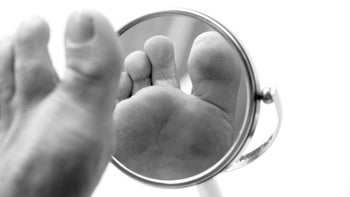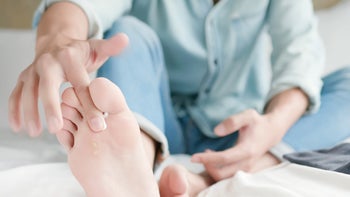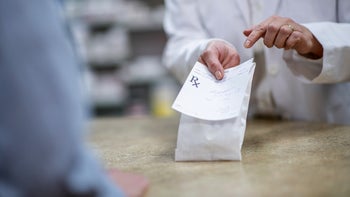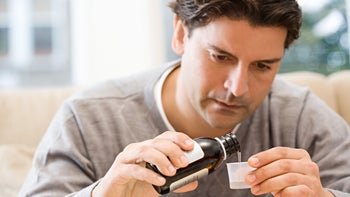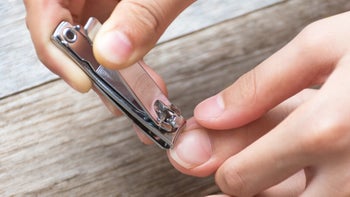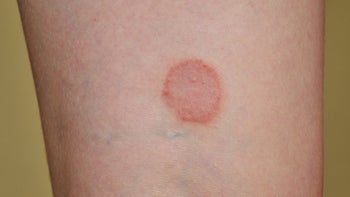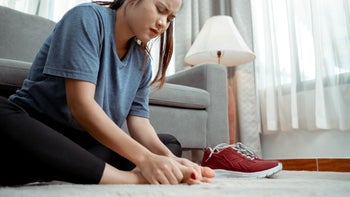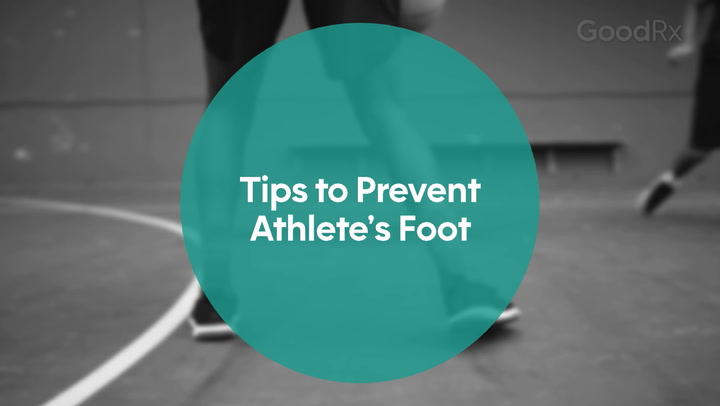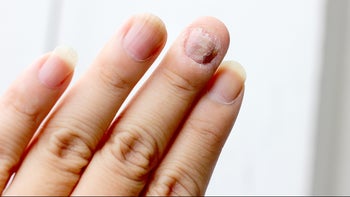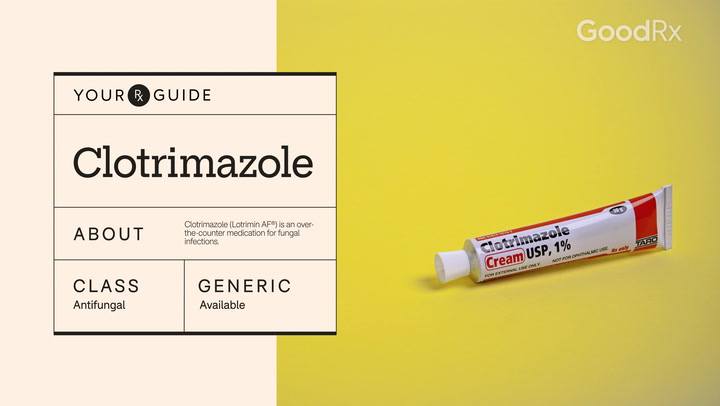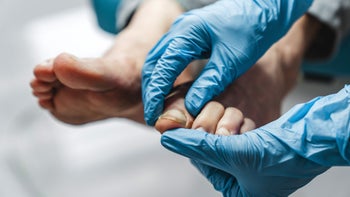
8 Ways to Get Rid of Jock Itch and What It Looks Like (With Pictures)
Key takeaways:
Jock itch (tinea cruris) is a fungal skin infection that affects your groin and thighs.
Jock itch is very contagious. It can spread through person-to-person contact and contaminated objects.
Jock itch treatment includes using antifungal creams, wearing loose clothing, and keeping your skin dry.

Have you ever had a very itchy, red rash on your upper thighs or groin? If so, you may have experienced jock itch, a frustrating skin condition caused by a fungus.
The name “jock itch” comes from the fact that athletes sweat a lot, which creates an inviting environment for fungi to thrive. But anyone can get jock itch — not just athletes.
Jock itch can be stubborn to get rid of. But there are home remedies that can help you get rid of jock itch fast.
What is jock itch, and what causes it?
Jock itch is a fungal skin infection that affects your groin, upper thighs, and buttocks. It’s typically caused by a dermatophyte fungus, which can also lead to skin infections in other areas. Jock itch is one type of ringworm, and its medical term is tinea cruris.
Jock itch is very contagious. You can pick it up easily from other people or objects like towels and clothing. If you touch something that has the fungus on it, you can get it too.
What are the symptoms of jock itch, and what does it look like?
Jock itch causes a red, brown, or violet rash in the creases of your groin, as well as your upper thighs or buttocks. Other symptoms of jock itch include:
Intense itching and/or burning
A rash with round or circular edges
Scaling, flaking, or peeling skin
Small bumps or blisters along the edges of your rash
Popular antifungal creams: Read which over-the-counter creams are most effective for treating jock itch and ringworm.
Do you have ringworm? Learn how to identify this common rash that can affect any part of your skin (with pictures).
How long is ringworm contagious? Find out how this common infection spreads and how long it’s contagious.
If you have jock itch on both of your thighs, the rash may look slightly different on each side. For example, it might be larger on one side or have a slightly different color.
Jock itch pictures
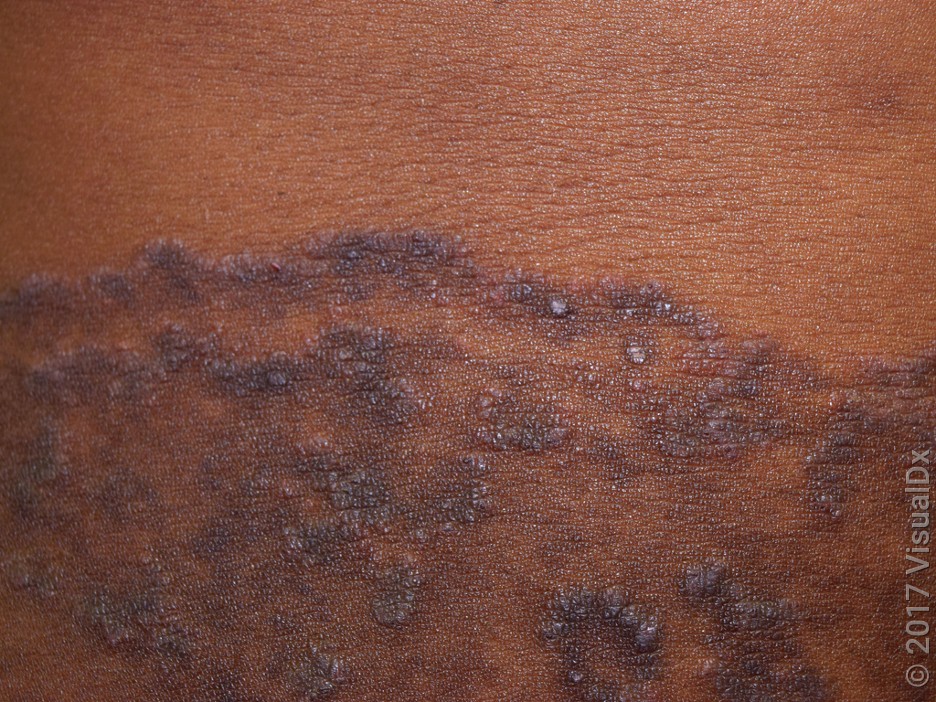
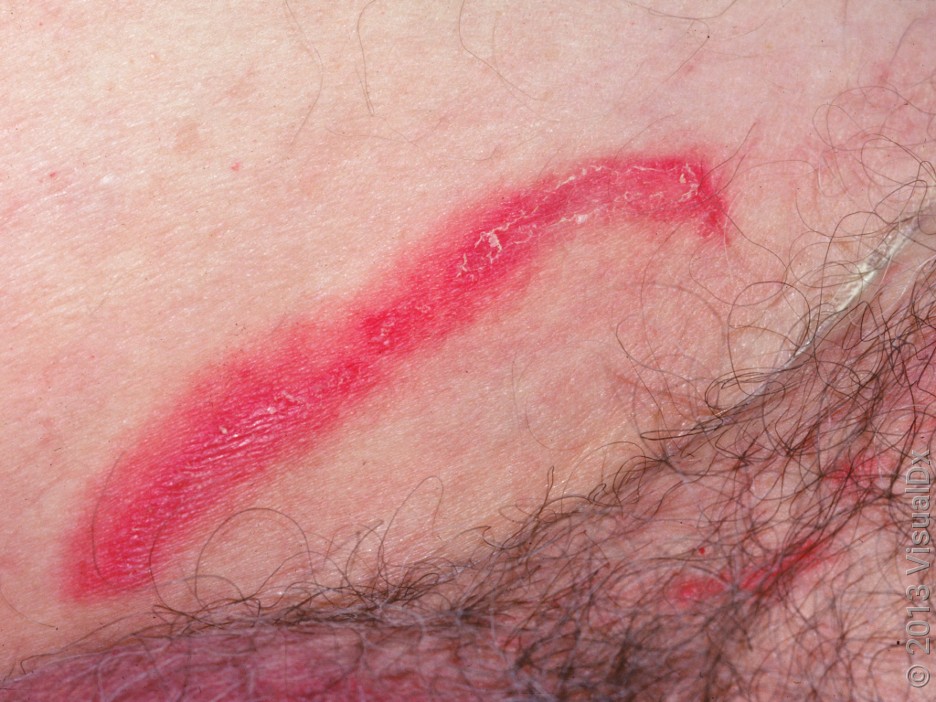
What are the best treatments for jock itch?
If you have jock itch, you’re probably uncomfortable and want to get rid of it fast. Here are eight home remedies and self-care tips to treat jock itch fast.
1. Start using an antifungal jock itch treatment right away
Antifungal creams kill the fungus that causes jock itch. The sooner you start treatment, the faster your infection will go away.
Many jock itch creams are available over the counter (OTC), so you don’t need a prescription.
Popular options include:
Clotrimazole (Lotrimin AF, Clotrimazole 3)
Miconazole (Monistat)
Terbinafine (Lamisil AT)
Tolnaftate (Tinactin)
Butenafine (Lotrimin Ultra)
It’s not clear if one cream works better than another. But some experts recommend starting with terbinafine or butenafine. Apply these creams to your rash 1 to 2 times a day for 2 weeks. If your rash doesn't improve or gets worse, see a healthcare professional.
2. Don’t scratch your rash
While scratching may bring temporary relief, it can make the condition worse. Scratching increases the risk of developing a secondary infection, like cellulitis, on top of your fungal infection. This makes it harder to treat and get rid of jock itch.
Scratching also transfers the fungus to your nails and hands. This allows the fungus to easily spread to other parts of your body.
3. Use a powder after bathing
Fungus thrives in moist areas. Keep your groin and thighs dry to create an environment where it can’t grow.
After bathing, dry your skin completely before dressing. Then, apply a powder to your groin and thighs to help keep the area dry. You can try:
Baby powder
Cornstarch
Antifungal powders
Other talc-free powders
4. Wear loose-fitting clothing and underwear
Tight-fitting clothes and underwear trap moisture, creating the moist environment that fungus loves. Opt for loose-fitting clothing, like loose pants, shorts, and boxers. Also, switch to cotton underwear. Synthetic fibers don’t always wick away moisture as well as natural fibers.
5. Gently clean your skin
Keeping your skin clean and dry helps jock itch heal faster. Here are some skincare tips for taking care of your skin affected by jock itch:
Wash the affected area daily with mild soap and water. Be gentle – don’t scrub. Avoid soaps with harsh dyes and fragrances.
Avoid antibacterial soap. Opt for mild cleansers instead. Antibacterial soaps won’t help since jock itch isn’t caused by bacteria.
Avoid products like rubbing alcohol or hydrogen peroxide. They don’t work and just irritate your skin.
6. Wash everything that touches your skin after one use
The fungus that causes jock itch can live on objects for several months or longer. If you’ve been treated but reuse something that still has fungus on it — like towels or clothing — you could reinfect yourself.
So, it’s important to wash clothing, underwear, and towels after every use. You also want to wash anything that touches your rash as soon as possible — including bedding.
7. Try tea tree oil
Tea tree oil and other essential oils have some antifungal properties. So, they might help get rid of your jock itch faster. But they won’t cure your jock itch when used on their own. Studies show that tea tree oil may help your jock itch cream work better.
Apply the oil directly to your rash before your antifungal cream. Use a concentration of 5% to 10%. If the formulation is too strong it can cause irritation and increase your risk of contact dermatitis.
8. Check the rest of your body for ringworm
Fungus can live anywhere on your skin. If you have jock itch, check for signs of ringworm in other areas. Common ringworm locations include:
Feet (athlete’s foot)
Fingernails and toenails (onychomycosis)
Scalp (tinea capitis)
When to see a healthcare professional
Most cases of jock itch can be treated at home. But in some situations, you may need to seek medical care. Consider seeing a healthcare professional if you experience any of the following:
Your rash doesn’t improve after 2 weeks of treatment
You’re not sure if it’s jock itch or something else
The rash spreads to other parts of your body
The rash is very painful or uncomfortable
The rash keeps coming back
Frequently asked questions
The jock itch rash is usually pretty distinctive. But sometimes it can be mistaken for other types of rashes. Some common ones include:
Yeast infection
If you’re not sure about your rash, a healthcare professional can help you figure it out.
No, jock itch usually doesn’t go away on its own. If you don’t treat it, jock itch can get worse and spread to other parts of your body.
No, jock itch isn’t a sexually transmitted disease (STD). But jock itch can be spread through any skin-to-skin contact. This can happen during sexual activity or other types of skin contact. You can also get jock itch by touching an infected object, like a towel.
The bottom line
Jock itch is a skin infection caused by a fungus. It causes a burning, itchy rash in your groin and thighs. Jock itch can be treated with antifungal cream. To speed up the healing of jock itch, keep your skin dry, wear breathable fabrics, and make sure to treat any other fungal infections, like ringworm or athlete’s foot.
Why trust our experts?



Images used with permission from VisualDx (www.visualdx.com).
References
Centers for Disease Control and Prevention. (2024). Symptoms of ringworm and fungal nail infections.
Ely, J. W., et al. (2014). Diagnosis and management of tinea infections. American Family Physician.
Larson, D., et al. (2012). Tea tree oil. Dermatitis.
Nazzaro, F., et al. (2017). Essential oils and antifungal activity. Pharmaceuticals.
Pippin, M. M., et al. (2023). Tinea cruris. StatPearls.
Roana, J., et al. (2021). Antifungal activity of Melaleuca alternifolia essential oil (TTO) and its synergy with itraconazole or ketoconazole against Trichophyton rubrum. Molecules.
Tan, K., et al. (2021). Tinea cruris. DermNet.
U.S. Food and Drug Administration. (2024). Skip the antibacterial soap; use plain soap and water.
Weinstein, A., et al. (2002). Topical treatment of common superficial tinea infections. American Family Physician.
Wróblewska, M., et al. (2021). The influence of tea tree oil on antifungal activity and pharmaceutical characteristics of pluronic F-127 gel formulations with ketoconazole. International Journal of Molecular Sciences.



